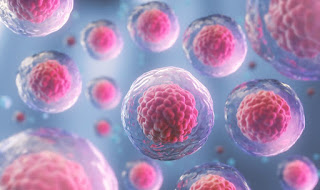Clinical Implications for Stem Cell Therapies
by Cecilia Leng, MBS 2020, GCSoM
Mentor: Gregory Shanower, PhD
Almost all of us have some family or friend with some form of disability, whether it is physical or mental. They probably suffer from a multitude of symptoms, including loss of memory and mobility. Oftentimes, such ailments cannot be cured, and only made manageable for a better quality of life by treatment with drugs or physical therapy. However, what would happen if there was a treatment that cured these symptoms? Therapeutic treatment of the disabilities described above may use pluripotent stem cells.
What are stem cells? Simply put they are primordial cells that can perform two functions: duplicate themselves and give rise to highly specialized cells that will form tissues and organs. A good analogy for a stem cell is a LEGO block. LEGOs are the small, similarly shaped blocks that can be used to build almost anything you can think of, whether it be a building, animal, scenery, and more. In the same fashion, stem cells can be used to turn into almost any mature cell type in the body, allowing researchers and doctors to utilize its capabilities and form multitudes of different types of cells.
Using stem cells, researchers are designing treatments for many incurable diseases and injuries. In neurodegenerative diseases, there is a loss of brain neurons, leading to worsening symptoms, such as loss of memory and basic skills. Stem Cell therapeutics maybe able to regenerate critical neurons in neurodegenerative disease patients allowing them to live a normal life. Clinical trials treating neurodegenerative diseases with stem cells have begun to shown promise. It may be possible in the near future to treat illnesses such as Parkinson’s and Alzheimer’s disease with induced pluripotent stem cells that can replace or substitute for neurons lost as a consequence of these conditions.
Similarly, many severe spinal cord injuries lead to a loss of limb functionality. Current clinical treatments including surgery have proved ineffective for the most part, and patients who have these injuries usually can do nothing except accept the daily changes to their lifestyle. However, the usage of stem cells as therapeutic agents for the spinal cord injuries, have begun clinical trials. Some patients in these trials have regained a fair amount of movement and feeling in their limbs. If the outcome of these preliminary trials is positive future expansion into general clinical trials is warranted.
If stem cells have so much potential, why aren’t they being used in treatment today? Despite excitement over the future prospects of such methods, there are a few notable drawbacks. The traditional method of isolating these stem cells involved using embryos, or aborted fetuses. Clearly usage of embryonic cells from aborted fetuses or from fertilized embryos represents moral and ethical dilemmas for the clinician. Recently researchers have started finding new ways to create stem cells by inducing pluripotency in normal skin cells or isolating stem cells from umbilical cord blood
As research into these stem cells continues to improve, there is hope that these stem cells will eventually be able to be put into clinical practice and be an effective treatment for many currently incurable conditions or diseases. This may prove to be life changing for patients afflicted with spinal cord injuries or neurodegenerative disorders.



Comments
Post a Comment